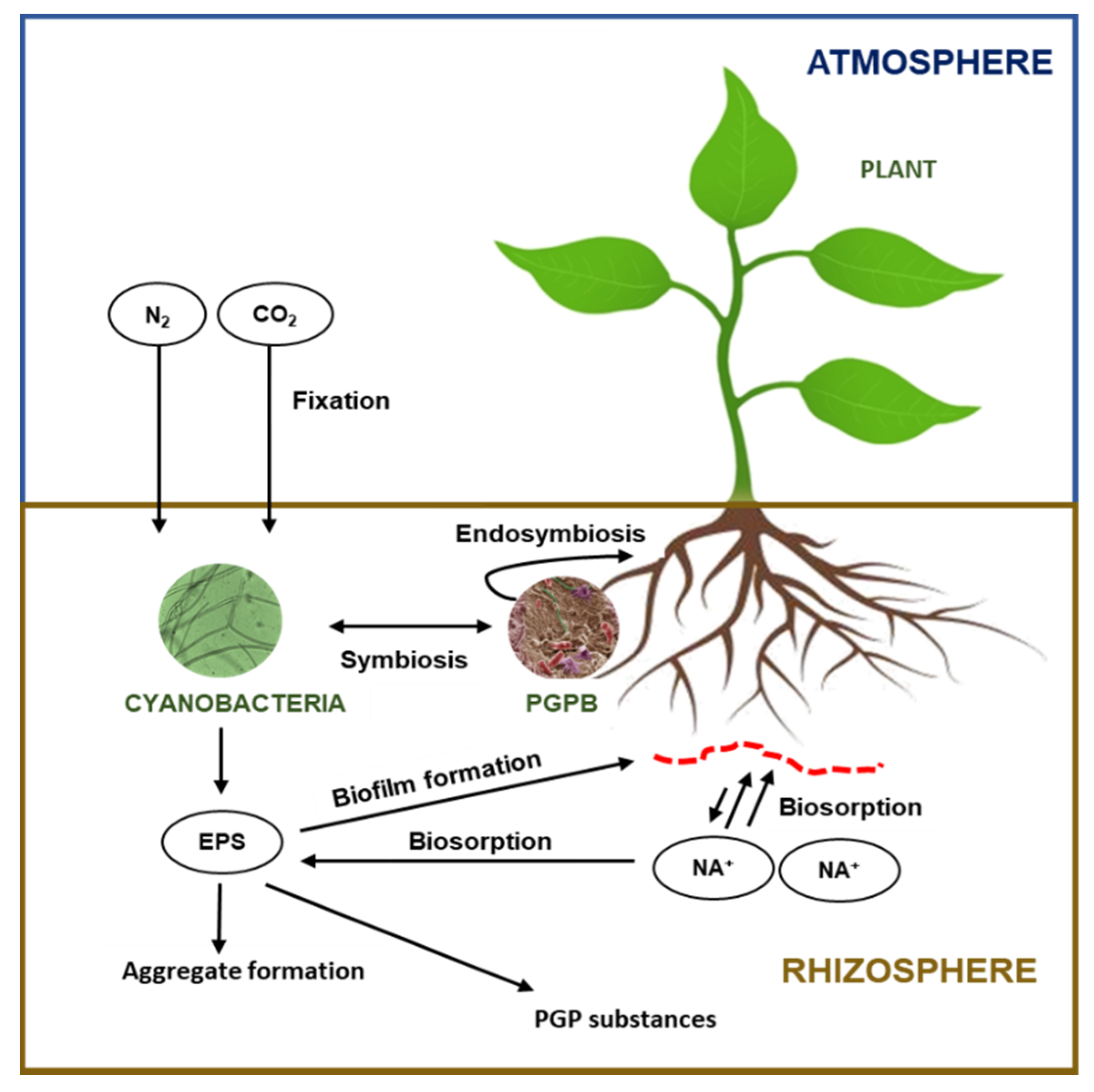Explain How Cyanobacteria Are Different From Plants
We measured the δ13C signatures of biological soil crust. These are a group of bacteria which lives in water.
Difference Between Green Algae And Cyanobacteria Definition Characteristics Types Similarities And Differences
Cyanobacteria are aquatic and photosynthetic that is they live in the water and can manufacture their own food.

. Instead cyanobacteria have a double outer cell membrane and folded inner thylakoid membranes that are used in photosynthesis. Because they are bacteria they are quite small and usually unicellular though they often grow in colonies large enough to see. Unlike eukaryotic plants and algae cyanobacteria are prokaryotic organisms.
Plants are classified as a kingdom Plantae within the Eukarya. In a way green plants and cyanobacteria have synthesized all the food on the earth. Similarly we can say that Cyanobacteria are not plants either.
Cyanobacteria are different from most other bacteria. Disentangling interactions among dominant primary producers including plants and autotrophic microbes can help partition their contributions to dryland C dynamics. Dryland ecosystems are increasing in geographic extent and contribute greatly to interannual variability in global carbon dynamics.
Algae and plants have other differences but that is probably the most important one. Heterotrophs- are consumers that get energy by feeding on autotrophs. Bacteria also called Eubacteria Archaea and Eukarya.
Genetic information encoded in DNA translates. Before we re-emphasize what has been explained in the definition. Cyanobacteria are eubacteria that carry out oxygenic photosynthesis.
Organisms that possess a nucleus mitochondria an internal cytoskeleton and in photosynthetic species chloroplasts. More or less they resemble plants and algae as they can produce oxygen from water during photosynthesis. They have photosynthetic pigments like chlorophyll ac phycocyanin and phycoerythrin.
Cyanobacteria are also called blue-green algae. The function of this organism is to fix nitrogen. Modern classification systems based largely on molecular evidence divide living organisms into three domains.
How do plants and cyanobacteria produce net positive oxygen if they need to also metabolize oxygen for energy production. Up to 10 cash back Cyanobacterial assemblages located next to all C3 plants and one C4 species had consistently more negative δ13C by 2 than the cyanobacteria collected from plant interspaces or adjacent to two C4 Bouteloua grass species. Also cyanobacteria has been reported to form Spores to resist unfavorable conditions while algae dies off in.
These enable them to produce food by themselves. Both use organic molecules produced by photosynthesis as a source of building blocks for growth and repair and as a source of chemical energy for cellular work. Its even a stretch to call them algae.
And algae are different from plants because the cells that comprise algae are not able to differentiate into different plant parts like stems roots and leaves. Its body is composed of a single row of cells and there is no sheath surrounding this organism. The key difference between bacteria and cyanobacteria is that bacteria do not produce free oxygen during their photosynthesis while cyanobacteria are capable of producing free oxygen during the photosynthesis.
Photosynthetic pigments of cyanobacteria are present on photosynthetic membranes. Biology As I understand plants use 6 carbon dioxide molecules to make 6 Oxygen molecules and 1 glucose molecule. This ancestry difference is often taken as the reason for the greater trait differences between the chloroplast and the cyanobacteria than those between the chromatophores and the cyanobacteria.
Cyanobacteria are capable of photosynthesizing. While plants and algae are closely related Cyanbacteria is not anywhere near them in its phylogenetics. The terrestrial plants understood as Embrihitas would form a paraphyletic group while the algae including the cyanobacteria would form a polyphyletic group.
Cyanobacteria is seen throughout the year can survive on moisture too while algae mostly blooms during rainy season and in water bodies during other seasons. Describe what a nostoc is. Cyanobacteria are similar to plants in that they both perform oxygenic photosynthesis.
Cyanobacteria are unicellular prokaryotic organisms. Cyanobacteria is a large and diverse phylum in the kingdom BacteriaThe phylum Cyanobacteria includes many different species but all these species have one thing in common that. Both cyanobacteria and plants follow the central dogma of biology.
They made their food with the help of photosynthesis. Cyanobacteria are also capable of nitrogen. Autotrophs- include plants algae and cyanobacteria and are photosynthetic organisms.
Therefore we are going to see the differences between the. Finally we indicate the main differences between plants and algae. Genus of filamentous cyanobacteria that moves by sliding back and forth against each other.
Nevertheless we have to recognize that the chloroplast traits common in the three lineages green algaeplants red algae and glaucophytes must. The main types of bacteria are classified not only by their membrane structure but by their genomic characteristics specifically by their relative contents of guanosine and cytosine nucleic acid bases. They lack a membrane bound nucleus chloroplasts and other organelles found in plants and algae.
They have the distinction of being the oldest known fossils more than 35 billion years old in fact. So now if ever you go for a swim at the beach and someone asks you what those green things that.

Agronomy Free Full Text Cyanobacteria As A Nature Based Biotechnological Tool For Restoring Salt Affected Soils Html

Difference Between Cyanobacteria And Algae Compare The Difference Between Similar Terms
0 Response to "Explain How Cyanobacteria Are Different From Plants"
Post a Comment